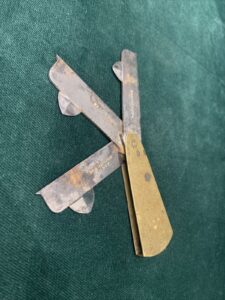Humoral medical theory
From the last centuries BCE until controlled empirical science took over in the nineteenth and twentieth centuries, medical practice was based upon humoral theory. The principles of this model posited that health was based upon the balance of four humors in the human body. Writing in The AMA Journal of Ethics, Faith Lagay puts it clearly and eloquently (and since I can’t possibly improve upon her text, I will give it to you straight).
‘The group of fourth- and third-century BC physicians known as the Hippocratics who formulated (and more importantly wrote about) their theories, were the first organized group to consider that illness had natural—not supernatural—causes. […] Their notion that 4 bodily fluids—blood, phlegm, yellow bile, and black bile—caused illness persisted for more than 2000 years in the West until the rise of controlled empirical science in the mid-19th century. Humoral medicine’s most compelling claim on our attention, though, is its belief that health and its opposite, dis-ease, were due to complex interactions among an individual’s 4 internal humors, his lifestyle and habits, and his environment.
‘The 4 humors corresponded in their natures to earth, air, fire, and water—the 4 elements of which all matter was composed, according the Greek philosopher Empedocles, a contemporary of Hippocrates. […] Blood was hot and wet like air; phlegm was cold and wet like water; yellow bile was hot and dry like fire; and black bile was cold and dry like earth. Health consisted in humoral equilibrium. Illness resulted when an excess or a deficiency occurred in one or more or the humors. The disturbance could result from overindulgence in food or drink, too much or too little physical exertion, or changes in the so-called “naturals,” i.e., the uncontrollable environment and climate. Because of the similarity of the natural elements and humors, certain humors were more likely to become excessive during given seasons of the year. Phlegm increased during the winter, bringing with it bronchitis and pneumonia because phlegm was cold and wet, like the chilly Mediterranean winters. In warm, wet spring, hot, wet blood increased, causing dysentery and nose bleeds.
‘The physician’s task was to diagnose which humor was out of balance; treatment then focused on restoring equilibrium by diet or by reducing the offending, out-of-balance humor by evacuating it.’
Humoral medicine is sometimes referred to as “heroic” medicine, because the traditional methods of attempting to rebalance the humors often required a degree of heroism on the part of the patient. The most regularly applied therapies were bleeding, using a fleam (a blade a bit like a scalpel), a scarificator (a spring-loaded device with several small blades), or leeches to reduce the quantity of blood in the body; purging (administering a treatment meant to evacuate the bowels); vomits; and blistering, (both pretty self-explanatory). Each therapy was designed to reduce an abundance of a particular humor in the body: bleeding, blood; blistering, phlegm; purging, black bile; and vomits, yellow bile. It was not until Galen, working in the first century CE, that illness began to be treated using botanicals and compounds.
I’ll continue to look at humoral and Galenic medicine in future newsletters, but if you want more information now, you can read the rest of Dr. Lagay’s fine article here: https://journalofethics.ama-assn.org/article/legacy-humoral-medicine/2002-07
It isn’t very long, but it’s very informative.



Three bloodletting devices: a manual fleam, a spring-loaded fleam, and a scarificator. The spring-loaded fleam and the scarificator allowed the person applying the bloodletter to adjust the depth of the blade mechanically. The manual fleam relied on the skill of the user.
 All photos of medical devices courtesy of eBay.
All photos of medical devices courtesy of eBay.
Cupping glasses. These were heated and applied to the patient’s back. The heated air created a vacuum between the cup and the skin, raising blisters in the most extreme cases. If you have ever seen the film The Madness of King George III, there’s a scene in which the Royal Physicians are cupping the king. (The Madness of King George III is a pretty good film for giving you an idea of what people – even kings – had to endure in the treatment of illness!) Mustard oil applied directly to the skin could also raise blisters.